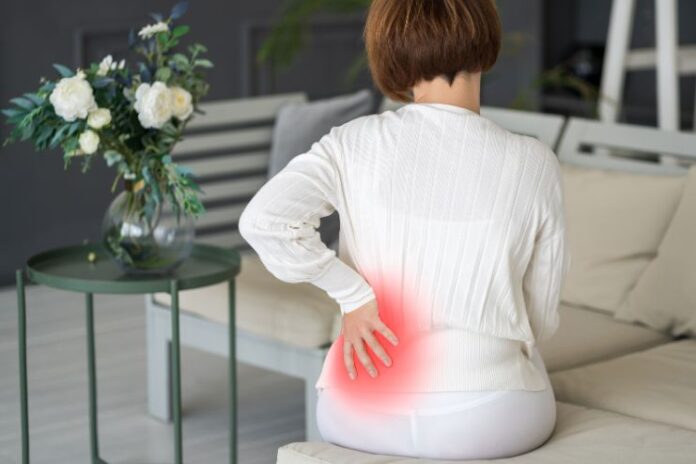Did you know that approximately 80% of adults will experience lower back discomfort at some point in their lives? This discomfort can disrupt daily tasks and reduce quality of life, whether caused by bad posture, prolonged sitting, or an underlying medical condition. Although there are drugs and medical procedures, they frequently only offer short-term respite or have unintended adverse effects.
Therefore, you must find safe, natural solutions for long-term comfort. Thankfully, eighteen well-established restorative advantages can help reduce inflammation, ease lower back pain, and promote recovery without the need for prescription drugs. These remedies, which range from calming herbal remedies to therapeutic exercises, target the underlying source of the pain and increase the range of motion.
Read More: Lower Right Back Pain: Causes, Symptoms, and Treatment
What is Lower Back Pain?
Lower back pain affects the lumbar region of the spine, specifically the lower back. Various ailments and injuries can cause it, but damage to the back muscles or tendons is the most common reason.
Lower back discomfort affects almost everyone at some point in their lives. The intensity of the pain can vary. Most people find it to be temporary. However, chronic (long-lasting) lower back pain is also prevalent; up to 23% of adults globally suffer from chronic lower back pain. In severe situations, walking, sleeping, working, and performing daily tasks may become impossible due to lower back discomfort.
Since lower back discomfort is so frequent, it can be challenging to determine whether you should be concerned. If something doesn’t feel right or if the discomfort prevents you from doing your regular activities, follow your instincts and contact a healthcare professional.
Causes of Lower Back Pain?
It might be very challenging to pinpoint the precise source of low back discomfort. Any of the following are among the numerous causes of back pain:
- Excessive use, physically demanding activities, or inappropriate use (e.g., hard lifting, repeated motions, prolonged vibration exposure).
- Aging or strains on the muscles and ligaments supporting the spine frequently cause vertebral degeneration.
- Obesity frequently puts more strain on the disks and weight on the spine.
- A disk that protrudes or that has herniated (slipped).
- Disease (e.g., compression fractures, spondylitis, osteoarthritis).
- Issues with the joints (such as spinal stenosis) can cause pain.
- The back muscles are not well-toned.
- Tense or spasming muscles.
Read More: Top 10 Bach Flower Remedies for Stress and Anxiety Relief
Symptoms of Lower Back Pain
Many other symptoms can accompany lower back discomfort. Pain in the lower back may:
- Show up gradually or all at once.
- Occur following a specific action, such as stooping to pick something up. There can be a “pop” when it occurs.
- Possess an unidentified trigger.
- Feel achy and dull, or sharp.
- Radiate down your leg’s back (sciatica) or your buttocks.
Home Remedies for Lower Back Pain
Even though the pain in the lower part of your abdomen might insinuate a number of health issues, several treatments for back pain at home work wonders in getting rid of it once and for all. If you have been experiencing lower back pain and are seeking effective natural remedies to alleviate it, this is the article for you.
1. Use a Pain-Relieving Cream
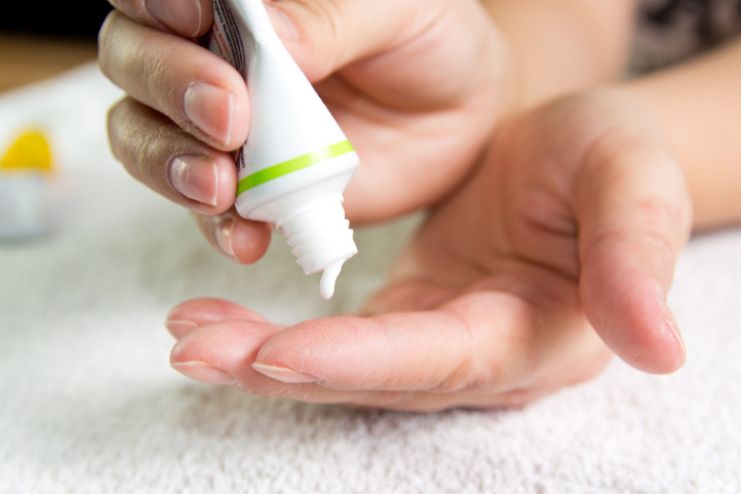
Both online and in pharmacies, numerous pain-relieving lotions are available to relieve back pain.
Menthol-containing pain relievers have a cooling effect that might momentarily reduce back discomfort.
According to a 2018 study, topical menthol application may desensitize the body’s pain receptors. On the other hand, excessive menthol use may increase pain sensitivity.
2. Minimal Rest in Bed

Bed rest was formerly the cornerstone of back pain treatment, but that is no longer the case. Doctors now advise you to stay active to prevent your muscles from becoming stiff. Even if your lower back pain is so severe that it’s painful to sit or stand, bed rest may still be beneficial. However, try to keep it to a maximum of one or two days, and limit it to a few hours at a time.
3. Try Arnica

People can use arnica, a homeopathic treatment, topically to treat minor injuries, bruising, swelling, and muscle soreness.
Although there is little scientific evidence to support Arnica’s efficacy, some people may find it helpful, and there is a low risk of adverse side effects.
According to a 2018 case study, using Arnica in conjunction with massage and acupuncture helped reduce the pain associated with osteoarthritis.
Read More: Is Cold Weather Making Your Back Pain Worse? Here’s What You Need to Know
4. Keeping Your Weight in Check
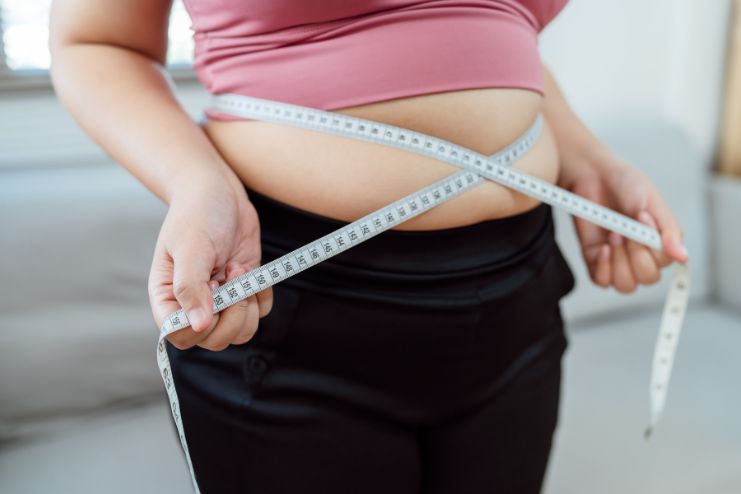
Being overweight puts additional strain on the lower back, causing pain and discomfort, especially around the middle. By maintaining a healthy weight, you can improve your posture and reduce the strain on your spine. By strengthening your core muscles with poses like planks, yoga, and Pilates, you can create an internal brace that provides your back with the support and stability it needs.
A strong core reduces lower back strain by distributing weight evenly throughout the body. Implementing a well-balanced diet rich in anti-inflammatory foods can also help alleviate back pain and prevent weight gain. Making minor lifestyle adjustments, such as regular exercise and a balanced diet, can significantly aid in maintaining a strong and pain-free back.
5. Modifying Your Position

By changing your position only, you can alleviate your back discomfort at home. People often have lousy posture whether they sleep or sit, which makes both activities significant sources of back pain. Verify that your pillows and mattress support you well and aren’t causing you discomfort.
If you work from home, you may have to cope with a cramped workspace and a messy desk, lacking the proper ergonomics for sitting for eight or more hours a day. Poor posture can significantly impact your health and well-being, causing stiff muscles, eye strain, and back pain.
6. Switching up your Footwear

Your shoes significantly influence your body’s alignment. How your hips, knees, and legs line up can strain your back. Back pain may result from wearing shoes with inadequate shoe padding, high heels, or no arch support. Wearing supportive footwear is essential when walking or exercising.
Reduce the frequency of wearing high heels and opt for flat shoes, such as flip-flops, instead. Instead, buy shoes that fit your arches and provide the right amount of cushioning and support to help alleviate back pain. Additionally, you can purchase shoe inserts for your current footwear.
Read More: Thriving Through Chronic Pain: Advanced Coping Strategies for Improved Quality of Life
7. Foam Rollers
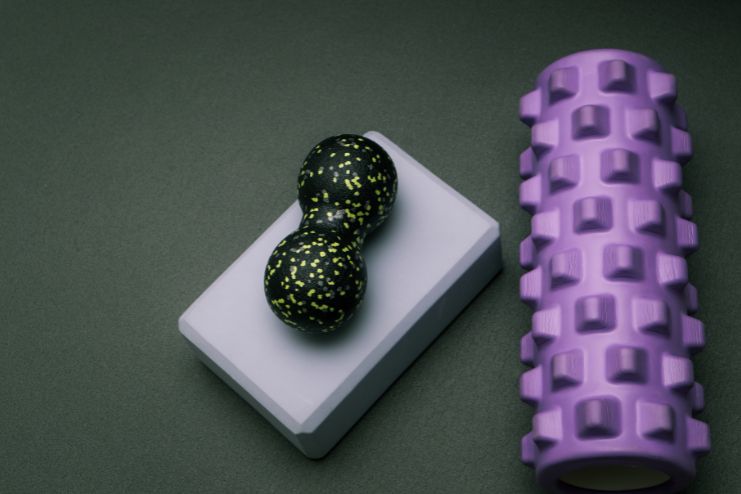
A foam roller is a common option for reducing back muscle pain. The user’s body weight applies pressure to the rollers, which function similarly to a self-massage tool.
You can find many foam roller workouts on YouTube, but one method to get started is to lie on the roller with your knees bent and the roller lengthwise down your spine. With your palms facing in, raise arms to the sky and then make a circle with them back out, around, and in. As you do this, lift and straighten one leg. Slowly lower it, then repeat with the opposite leg.
8. Reduced Stress
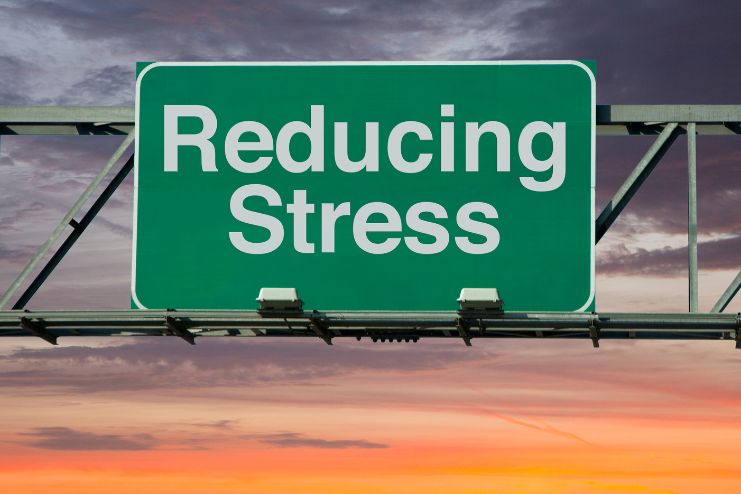
While occasional stress is a part of everyday life, ongoing stress can harm your health and lead to physical discomfort. When you experience stress or anxiety, your body releases chemicals such as cortisol and adrenaline to defend you from harm.
These substances can cause your muscles to tighten and spasm involuntarily. Stress can also cause chronic spinal tension, a typical cause of back pain and discomfort. If you’ve been under a lot of stress, look for ways to unwind and relax. Consider incorporating deep breathing, yoga, meditation, and aromatherapy to help reduce stress.
9. Oral Drugs
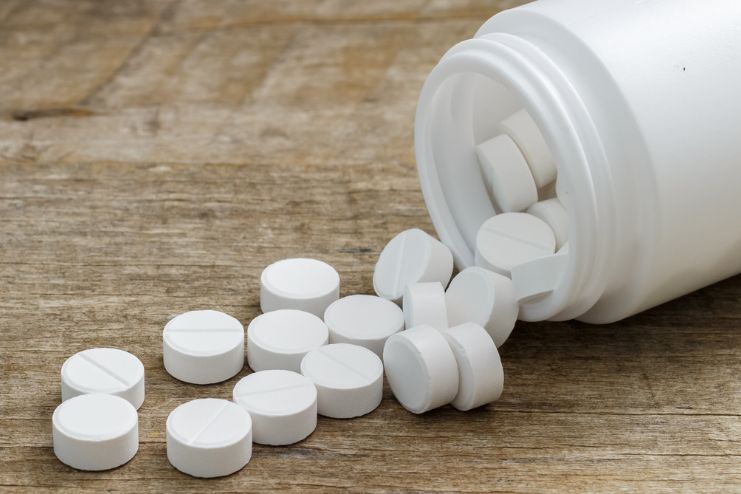
Taking oral medication is one of the most popular at-home treatments for severe back pain. However, some over-the-counter drugs might be more effective for muscle sprains and strains.
For instance, Tylenol or Acetaminophen is less helpful for sprains and strains of the back muscles. Non-steroidal anti-inflammatory drugs (NSAIDs), like Advil (ibuprofen) and Aleve (naproxen), are the most preferred option. NSAIDs reduce pain by having anti-inflammatory properties. Reducing inflammation can enhance movement and lessen pain.
Read More: Traveling This Winter? Back Pain Tips for Long Car Rides and Flights
10. Get Your Muscles Moving with Exercise

A quick stroll, aerobics, yoga, water aerobics, swimming, or similar low-impact exercise may reduce back discomfort.
To maintain strong and flexible muscles, consider starting a daily workout regimen that incorporates both stretching and strength training.
Frequent exercise may help prevent future episodes of back discomfort caused by tense muscles.
11. Heat and Cold Treatments

After a back injury, it is recommended to apply cold compresses or an ice pack rather than heat. This can prevent or lessen swelling and relieve discomfort by numbing the affected area.
However, heating pads or hot water bottles on your back may help alleviate back pain approximately 48 hours after its onset; in addition to increasing blood flow and relieving sore muscles, the warmth also aids in the healing process. Remember that heat therapy is only beneficial during the first week of treatment.
12. A Diet That Reduces Inflammation

An anti-inflammatory diet is an additional treatment for back pain. A healthy diet guarantees you the vital vitamins and nutrients your body needs. Conversely, an unhealthy diet may result in weight gain or inflammation, further strain your bones and joints, and create back discomfort.
Fruits and vegetables, which can both possess anti-inflammatory properties, are essential components of a balanced diet. Strawberries, oranges, cherries, blueberries, and tomatoes are known to help lower inflammation.
If you experience back discomfort and inflammation, consider reducing your intake of sweets and increasing your consumption of vegetables. It can help you lose weight or lessen the irritation you’re feeling.
Read More: 5 Best Bodyweight Exercises for a Stronger Back: No Equipment Needed
13. Consume a Lot of Liquids

Drinking plenty of water is crucial for maintaining spine health and preventing lower back pain. Water helps keep spinal discs hydrated, allowing them to continue acting as natural shock absorbers.
Adequate hydration promotes joint lubrication, nutrition delivery, and muscular suppleness. It also lessens stiffness and strain. Dehydration weakens the spinal discs, increasing discomfort and the chance of injury.
Drink at least eight glasses of water daily to maintain optimal health for your spine and associated muscles. Add herbal teas or electrolytes to improve hydration and promote overall back health.
14. Invest in a Better Mattress
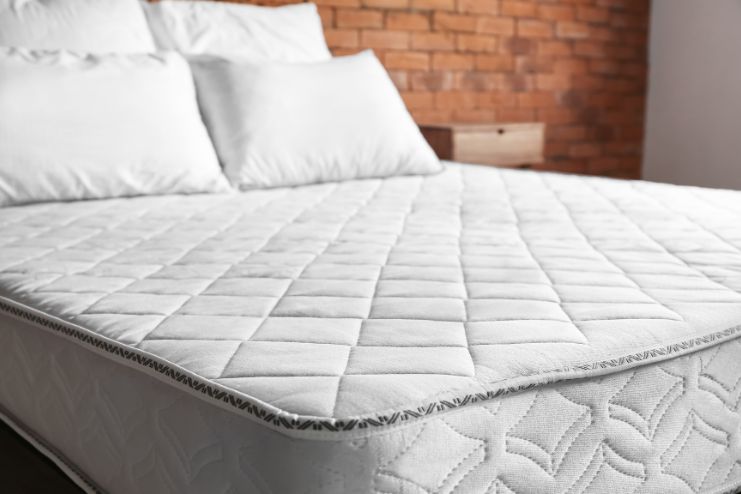
It is a fantastic, yet pricey, at-home treatment for back discomfort. Purchasing a mattress that provides the proper support is crucial because it takes a lot of wear and tear every night.
Try lying down on various mattresses to see which suits your body the best. Generally, you should buy a mattress that allows you to sleep through the night without experiencing back pain upon waking.
How Can Lower Back Pain Be Treated?
Rest, ice, and over-the-counter (OTC) pain medicines help many people with mild to severe lower back discomfort. Following a few days of recuperation, you should be able to resume your regular activities. Being active promotes healing by increasing the blood flow to the area.
You should get medical help right away if you have significant back pain or if it follows a very traumatic event, such as a fall. Treatments could consist of:
Medications: To treat pain, your doctor may suggest prescription painkillers or nonsteroidal anti-inflammatory drugs (NSAIDs).
Physical therapy, or PT, can help you build stronger muscles that will better support your spine. Additionally, it increases flexibility and helps you stay injury-free.
Injections: To help treat persistent lower back pain, your doctor might suggest lumbar epidural steroid injections.
Surgery: Surgery is necessary to treat certain lower back disorders and injuries. Low back pain can be treated with various surgical procedures, including many minimally invasive options.
Finding the appropriate course of action for you could take some time, particularly if you have persistent lower back discomfort. Your provider will be by your side throughout the process.
Read More: Can Standing Desks Reduce Your Risk of Chronic Back Pain?
Conclusion
You can get relief from your lower back pain, so it doesn’t have to rule your life! The treatments we examined offer a comprehensive approach to recovery, encompassing a range of techniques, including calming heat and cold therapy, core-strengthening exercises, anti-inflammatory diets, and posture adjustments. Why not combine different solutions rather than depending on just one?
Give these treatments a chance; your body needs regularity and attention. Try different things, pay attention to your body, and choose what suits you best.
We would be delighted to hear from you! Which treatment has had the most significant impact on your lower back? Or do you have a little-known trick that we haven’t shared with you? Please share your opinion in the comment section! Someone else may be looking for relief, and your experience could be just what they need.
References
- https://my.clevelandclinic.org/health/diseases/7936-lower-back-pain
- https://www.hopkinsmedicine.org/health/conditions-and-diseases/back-pain/lower-back-pain-what-could-it-be
- https://www.cedars-sinai.org/health-library/diseases-and-conditions/l/low-back-pain.html
- https://www.upmc.com/services/orthopaedics/conditions/lower-back-pain
- https://www.webmd.com/back-pain/ss/slideshow-low-back-pain-overview
- https://www.health.harvard.edu/pain/home-remedies-for-low-back-pain
- https://www.medicalnewstoday.com/articles/322582#when-to-see-a-doctor
- https://stvincents.org/about-us/news-press/news-detail?articleId=53177&publicid=745
- https://www.voltarol.co.uk/health-wellness-pain/complementary-therapies/best-home-remedies-for-back-pain/
- https://www.advocatehealth.com/health-services/brain-spine-institute/spine-care-center/lower-back-pain/relief
In this Article















